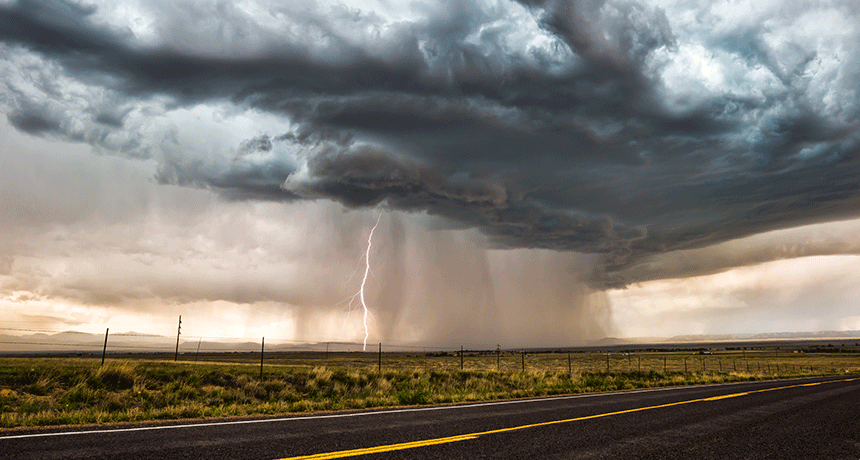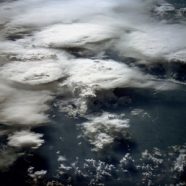Dirty clouds change rainfall
Scientists find a link between air pollution and extremes in rainfall

How much precipitation falls from the sky may be impacted by the pollution wafting through the skies, new data show.
mdesigner125/iStockphoto
What goes up into the air can have a big impact on what comes down.
In a new study showing how large weather systems are closely linked, scientists report that tiny airborne particles affect how much rain falls over a region. Some of these particles, called aerosols, occur naturally and include dirt and dust. Other aerosols come from human activities and represent air pollution. Once these particles get swept up into a cloud, they start to make changes.
The scientists found a link between large amounts of aerosols and extreme weather: The clouds in dry regions may hold their water longer, contributing to droughts. Clouds drifting over moist areas may lose their water more quickly, leading to severe rains. Both situations may pose severe problems for farmers.
“Haze, storms, drought and flood: We found very strong evidence that they are well connected,” Zhanqing Li, an atmospheric scientist, told an audience of scientists at a recent meeting in Washington, D.C. Li, from the University of Maryland in College Park, worked on the new study connecting the dots between pollution and rainfall.
The scientists wanted to know how aerosols in the air affect cloud development over many years. To find out, they studied 10 years’ worth of data from the clouds that soared over measuring devices in central Oklahoma. They learned that rainfall depended on the amount of aerosols in the clouds, as well as the type of cloud and amount of moisture.

But imagine what would happen with too many aerosols: The water molecules would condense, but not enough on any individual aerosol to make it heavy enough to cause rain. That’s what Li and his colleagues observed. In low clouds containing tiny droplets of water that aren’t heavy enough to fall, too many aerosols kept the moisture from raining out.
The scientists discovered the opposite behavior in tall clouds with liquid water in lower areas and ice higher up. Water molecules were swept up to the top, where they froze. Frozen cloud vapors are especially effective at collecting and condensing. So they easily became too heavy to stay in the air and fell out as heavy rains. In addition, the researchers found that aerosol pollution can cause clouds to grow twice as high as they would in clean air.
The study suggests that aerosols make extreme weather even more extreme.
Climate scientist Daniel Rosenfeld told Science News that an abundance of aerosols in clouds can double the chance of heavy rain. Rosenfeld, who studies the science of clouds and rain at the Hebrew University of Jerusalem, also worked on the new study.
Other researchers, like atmospheric scientist Renyi Zhang at Texas A&M University in College Station, say Li’s study is an important landmark in understanding the relationships among large weather systems. “This is the first study to clearly establish the link between aerosols, precipitation and climate,” Zhang said.







